#castes
Note
hi, i hope i am not crossing a line, please ignore if this is bad question. i am just curious
in one of your posts u said your caste is karava. this is the first time i am hearing a sinhalese talk about caste (i speak tamil and never really felt confident in my sinhala to make sinhalese friends)
can you explain about the castes or tell me where find information about it
Caste is a fucked up concept across the board, obviously, but Sinhalese castes are different from Tamil Hindu in that they involve the cultural and socio-political organisation of the Sinhalese community, and has no connection to religious scripture.
There are thirteen castes that still exist today. We used to be a chiefly agrarian society, so the majority of Sinhalese are Govigama ("Govi" means farming) and they're the kind of "bourgeoisie" of the social order in that few are above them and anyone else is below them. Those that rank below them are castes like Bathgama and Kinnara (who are meant to be agricultural labourers) Vahampura (something to do with making cinnamon or treacle) Navadanna (artisans, especially makers of jewelry) and Rada (launderers). Radala is the caste of the nobility, and afaik the only one above Govigama. They're all from highlands of Kandy, the last Sinhalese holdout against the Europeans for about 200 years. There's no nobility among the lowlanders (between the Portuguese, Dutch and British, they were either killed, assimilated or fled to Kandy) so the Govigama caste is the highest one everywhere else. This means Govigama used to be the only one that was qualified to join the Theravada Buddhist priesthood* and also receive education and job opportunities as government servants—right up until the mid-20th century, when the karava gentry turned into robber barons under the British Empire's demand for cash crops.
Karava people are the majority inhabitants in the Southern coastal lands, which are predominantly Sinhalese Buddhist, as opposed to the Tamil lands of the Northern coast (Eelam really) and the proliferation of sparsely-populated Muslim communities in the rest of the coastal belt. Karava is called the fisherfolk caste by the rest of country, despite their own strong objections. Caste is reckoned patrilineally. I'm Karava through my Dad and I married into a Karava family. Nearly every Karava person I know insists that we're actually the warrior caste and were given the coastal lands as reward for our service to the king. I'm sure there's a legitimate case to be made for this, (this site keeps being referred to me) but I don't care enough to find out because the Karava insistence that being called fisherfolk is a Govigama conspiracy is incredibly funny. I mean, it could be true, what do I know, but so much of the cope and seethe stem from our lingering inferiority complex and resentment at having been treated as inferior until a few decades ago. After being ground under the Radala and Govigama feet along with the rest for ages beyond record, suddenly us lowlanders were rolling in money from our toddy, coconut and rubber plantations, matching or surpassing the wealth of the nobility. We were chasing off Tamil and Muslim minorities to establish our own lost cultural capitals in Anuradhapura and Pollonnaruwa that predated the Kandyan kingdom and making our own sect of the Buddhist priesthood (Amarapura Nikaya) that would ordain Karava people. The robber baron types also got very chummy with the British colonial administration and were awarded cushy jobs in government over the Govigama, who still disdained industrialization and commerce. (To this day my mother's family looks down on business people no matter how rich. Merchants are considered grasping and untrustworthy.) By the time of Sri Lanka's independence from the British in 1948, we had two varieties of equally rich, snooty, virulently ethnonationalist Sinhalese elites who had gotten ahead by selling us out to the British, but with the highland Radala still believing they were too pure-blooded to mix with the hoi polloi and the lowland Karava resentful at being considered the polloi no matter how hoi they'd become. Post-independence, Sri Lanka's adoption of free education and free state universities saw masses of lowlanders, Karava, Durava and Salagama all, sending their kids to university to attain upwardly mobile careers in engineering, medicine and teaching. "If the boy is Karava he's probably in engineering" is a common joke. It's a clear shift away from our rural agrarian roots into urban sprawl and high socio-economic competition in place of social stratification.
We also have a caste of Untouchables called the Rodiya. In ancient times, you and all your family being stripped of their lands and titles and banished into the Rodi Rahaya was one of the punishments reserved for the noble houses that ran afoul of the monarchy. It condemned your entire lineage forever. This was such a dire fate that some would have favoured execution.
Rodiyas were not permitted to cross a ferry, to draw water at a well, to enter a village, to till land, or learn a trade, as no recognised caste could deal or hold intercourse with a Rodiya [...] They were forced to subsist on alms or such gifts as they might receive for protecting the fields from wild beasts or burying the carcasses of dead cattle; but they were not allowed to come within a fenced field even to beg [...] They were prohibited from wearing a cloth on their heads, and neither men nor women were allowed to cover their bodies above the waist or below the knee. If benighted they dare not lie down in a shed appropriated to other travellers, but hid themselves in caves or deserted watch-huts. Though nominally Buddhists, they were not allowed to go into a temple, and could only pray "standing afar off"
(Source)
Allegations of witchcraft and cannibalism aside, the Rodiyas themselves were known to be a proud folk that considered themselves the pure-blooded descendants of the royalty that were punished this way. Here's a Reddit post that expounds on them more, along with photographs. It seems that the strictures against covering up had fallen away between the turn of the 20th century and the '70s. Not much is known about their current living conditions, but I believe that, like India's own Untouchables and the low caste of Eelam's Tamil Hindus, they must have converted to Christianity to escape the stigma.
Casteism is still somewhat of a problem in the Sinhalese community, but it's lessening every generation. My maternal grandparents weren't entirely happy about my mother marrying my Karava father but conceded because he was an engineer with a stable career. My older cousin had to fight his Karava family to marry his school sweetheart because she was both poor and Bathgama caste (I think "Padu" might be a derogatory name for it). The fact that he succeeded is noteworthy because it would have been a huge scandal in my parents' time. The Radalas are still a bunch of insular dipshits who try to keel over and die if one of them tries to marry out. But many of them are also migrating abroad so Idk if it's too much to hope that they leave the caste shit behind when they assimilate into Western society. It certainly hasn't worked for the Brahmin Indians. But the outlook is better for the rest of us.
*There is no caste system in Buddhism. The Buddha in fact was an egalitarian social reformer who advocated against the Vedic caste system and ordained Untouchables as well as women. So obviously the Theravadin priesthood of Sri Lanka, that bastion of the Buddha's Word, would make sure that only high caste men could ever be ordained. Love the fact that the Karava social revolution just made sure they had their own sect instead of, y'know, pushing for anything more equitable. I always say that if we really want to protect Buddhism we have to abolish the Sinhalese.
#sri lankan culture#casteism#castes#anthropology#south asia#desi tag#sri lanka#sinhalese#govigama#karava#sinhalese culture#society and culture#knee of huss#asks#anon
41 notes
·
View notes
Text
Varric Tethras - The Proud Dwarf

So it's not a big secret that the best companion Bioware ever created was Varric Tethras, the lovable rogue, crossbowman, author and handsome Viscount of Kirkwall.
There are ao many reasons to love Varric, but one I don't see much discussed, is the subtle, and contradictory relationship Varric has with his own race, the Dwarves of Thedas.
Varric makes it a point of always putting his seeming disdain for his own people out in the open, always making it clear how much he dislikes the traditional Dwarven culture, wqy of life and so on.
He describes Orzammar, one of the great wonders of the world as cramp tunnels filled with shit and body odor, he never fails to mention how much he hates the deep roads, and he often mocks dwarven pride at any opportunity with his usual wit and charm.
On the surface, Varric might seem like he has a lot in common with Sera and her racist views on all elvhen kind, but that really, really is not the case.
Because under that exterior of seeming disdain, is a man who both understands Dwarven Culture in all it's flaws, but also loves it and hates it in equal measures.

Varric has always made it clear how much he loved the Hanged man, and essentially made his room there his office, his real home away from the uber dwarfish merchant guild.
And do you know what he fills it with?
The dwarfiest architecture you can imagine. Varric has a dwarf table, a noble dwarf chair, dwarven artwork on the wall, and even a dwarven stone bed.
All expensive and traditional stuff which he would have had to had personally paid for to transport into this room out of his own pocket.
Varric for all his harsh words on the Dwarven people, WANTS to live in a home that looks utterly Dwarven.
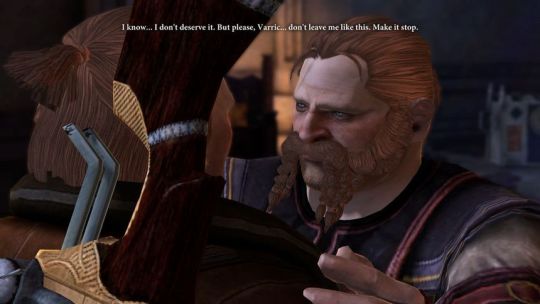
The most obvious moment that puts Varric's love for his dwaf ancestry on full display is of course the act 2 quest from da2, where he and an insane(temporary lucid) Bartrand has a heart to heart where both puts their real feelings on the tragedy of their situation on display.
Varric chastises Bartrand for in his madness having thrown away every bit of his dwarven nobility and honor on a stupid trinket, and Bartrand ends up begging his brother not to let house Tethras fall with him, in this display of utter madness and dishonor.
The entire thing is a deeply tragic display where the two brothers show that deapite all their differences, they really did love each other deeply, as well as the fact they had a shared love of their ancestry as Orzammar Nobility.
Of course Varric almost never comes out and says it nearly this clearly anywhere else, as showcased in another side quest where you give him back the Tethras family signet ring that Bartrand had to pawn to finance the expedition.
He doesn't come out and say it, instead focusing on the bad aspects of Orzammar in this quest, but unless hawke is rivaling him when he gives him the quest, varric has a huge approval boost in response to getting his family ring back, showing the thing really did mean a lot to him, despite his disparaging it and Orzammar in said quest.
Later, in Inquisition, Varric never misses a chance to badmouth Orzammar and tradition, but he reacts with incredible sadness at the prospect of Orzammar one day possibly falling.
When Solas asks him about Dwarven literature, and whether there is a lot of Dwarven tricksters, varric gives a smartass remark summing it up as Dwarves tend to write how they want the world to be, while humans write how they think the world is, eith the latter being clearly superior.
It's a good scene, but it has a deeper meaning that ties into Varric's deeper views on Dwarven culture.
Varric knows how Dwarves write, because he has read Dwarven liturature, and understands it completely as both a dwarf, a reader, and a writer, and how it in turn differs from human literature.
For all his grumbling on dwarves in Orzammar being obsessed with their ancestors, he himself is the exact same way as shown in legacy when you find the original Tethras and gives him to the stone, able to shortly remember every bit of his own family lore on the spot and being moved to tears by the tragedy of it all.
Varric defends both surface dwarves and Orzammar dwarves against Solas accusation that they have given up against the darkspawn threat, though in his usual way, he makes it out like surface dwarves are clearly superior.
Varric genuinely loves and cares about so much of Dwarven culture and history, and he understands it deeply.
Which in turn also is the reason he genuinely hates so much about it.
Like all of the DA2 companions, Varric has something he is deeply, deeply obsessed with, something that drives him as a person, and motivates his actions through the entire story. The difference between him and everyone else, is that this obsession never reached a conclusion, because Varric doesn't get to actually face it, and confront it.
That obsession is, of course, the Dwarven Merchant Guild.
Varric HATES the Dwarven Merchant guild, and though he uses his regular humor to portray it, in this case it's actually the opposite of the way he will always be critical of the Dwarven people. Because Varric hates the guild far, far more than he ever pretends to hate Orzammar.
Varric always talks of how shitty the guild is, how it embodies the absolute worst parts of dwarven culture, and essentially how it ruined Bartrand from ever being able to function as anything other than a cutthroat businessman. He time, and time, and time again, refuses to interact with the guild, breaks the law hard to not have to participate, and all in all cold shoulders them and their cutthroat culture completely.
There is a very important, significant moment in act 3, that is incredibly easy to miss, but completely recontextualizes varric's entire motivation for wanting the deep roads expedition.
Varric talks about the real reason why Bartrand wanted to go through with the expedition, of how it represented the one chance he had to get AWAY from the guild forever, just by being rich enough he no longer had to deal with them anymore.
Varric portrays it as Bartrand's big wish and motivation, hut it's incredibly obvious if one pays attention that this was a wish the two brothers actually shared, a mutual desire in the world. Which in turn is one of the reasons why Varric is so incredibly angry at his brother when he goes off the deep end due to the idol and betrays them.
Him and Bartrand got into this venture to finally, once and for all get out of having to deal with the worst parts of surface Dwarf society, and here his brother seemingly willingly turned his back on all of that, showing the only thing he ever cared about was pure greed.
In other words, everything both he and Bartrand hated about the Merchant Guild.
Varric hates the Caste system. He hates the division between surface and "regular" dwarves, and he thinks Orzammar's nobility has a collective stick up it's ass. And yet despite all of that, he loves the Dwarves. He loves the idea of nobility and the ideals it is supposed to represent, he loves Dwarven architecture, their grand ability to make shit, and the incredible grit and romanticism about the Dwarves long, unending struggle against the darkspawn.
The only part of Dwarven society Varric has no love for, is the Merchant Guild. It is Orzammar's nobility without anything resembling virtues, nobles who lost their caste, and yet still enforces a brutal hierarchy of blood, and cares for no ideals, no honor, no cause, except for the clink of money.
Varric is such a deep character, and I really wish that in the future, we get to see this aspect of him fleshed out even more.
#dragon age inquisition#varric tethras#meta#dragon age 2#dwarves#dwarf#orzammar#surface dwarves#castes#dwarven pride
44 notes
·
View notes
Text
14 avril : l’anniversaire du Dr Ambedkar, l’un des fondateurs de l’Inde actuelle
C’est le 134e anniversaire de Babasaheb Ambedkar et son aura n’a cessé de grandir ces dernières années. Cet homme, né dans un milieu défavorisé et qui sera l’un des premiers intouchables à faire des études supérieures, à bénéficier d’une bouse pour étudier aux États-Unis et à Londres, et à se hisser au plus haut niveau de l’État indien dont il a participé à la fondation. Il fut député, ministre de la Justice, du Travail… On lui doit pour l’essentiel la constitution indienne, notamment les articles sur la laïcité, la lutte contre les discriminations. Très jeune, il a lutté contre le système des castes et, une fois au gouvernement, il a mis en place une discrimination positive.
Bhimrao Ramjo Ambedkar est né le 14 avril 1891 à Mhow (appelé aujourd'hui Ambedkar Nagar) dans le Madhya Pradesh. Son anniversaire a été fêté publiquement pour la première fois à Pune en 1928 par ses partisans. Mais il a fallu attendre 1990, à la veille de son centenaire, pour que le Dr Ambdekar reçoit à titre posthume le Bharat Ratna, la plus haute distinction civile indienne. En outre, la période 1990-91 avait été déclarée « Année de la justice sociale ». Certains État de l’Inde célèbrent le 14 avril une journée de l’équité. Babasaheb Ambedkar (son surnom) est particulièrement vénéré par les intouchables qu’il appelait les datits, et basses castes dont il était (car sa famille était de la la caste des Mahars) ; mais aussi des bouddhistes, car un an avant sa mort, en 1956, il s’était converti au Bouddhisme pour protester contre le maintien de l’esprit des castes (pourtant abolies par la constitution) et la sur-représentation des hautes castes au sommet de l’État. Il avait entraîné avec lui la conversion en masse de plusieurs centaines de milliers d’intouchables.
Ambedkar Jayanti n'est pas une fête nationale en Inde. Mais, c'est un jour férié dans 25 États et territoires de l'Union indienne (sur 36) , dont Andhra Pradesh , Bihar , Chandigarh , Chhattisgarh , Goa , Gujarat , Haryana , Himachal Pradesh , Jammu-et-Cachemire , Jharkhand , Karnataka , Kerala , Ladakh , Madhya Pradesh. , Maharashtra , Odisha , Pondichéry , Pendjab , Rajasthan , Sikkim , Tamil Nadu , Telangana , Uttarakhand , Uttar Pradesh , Bengale occidental…
Ce sont ces deux dernières décennies que le culte d’Ambdekar a pris de l’ampleur. Le jour de son anniversaire, les gens se rassemblent devant les statues et les mémoriaux du Dr Ambedkar pour lui rendre hommage. Les autorités indiennes ont fini par s’y plier et à déclarer, localement, la journée du 14 avril comme fériée. Les écoles et les universités organisent des séminaires, des conférences et des discussions pour informer les jeunes générations sur la vie, les philosophies et les contributions d'Ambedkar. Les processions et rassemblements publics sont très courants dans le cadre des célébrations. On organise chaque année un marathon, « Run for Ambdekar » , des spectacles de danse et de musique traditionnelles illustrant les thèmes de l'égalité et de la justice sociale ajoutent une dimension culturelle aux célébrations. On prononce des discours et organise des débats sur des questions liées à la justice sociale et à la discrimination de caste.
Il n’est pas vraiment dans la droite ligne de l’Inde de Narendra Modi mais son culte n’a cessé de grandir ces dernières années. On célèbre aussi l’anniversaire de sa mort, chaque 6 décembre, Mahaparinirvan Diwas.
Un article de l'Almanach international des éditions BiblioMonde, 13 avril 2024
#Bhimrao Ramjo Ambedkar#Dr Ambedkar#Ambedkar Jayanti#14 avril#Babasaheb Ambedkar#Ambedkar Nagar#intouchables#dalits#castes#laïcité#bouddhisme
2 notes
·
View notes
Text
Book Review – ‘Prodigy’ (#2 Legend) by Marie Lu
Two teen rebels that have everything that they are tested…
Genre: Y/A, Dystopia, Science Fiction
No. of pages: 371
June and Day arrive in Vegas just as the unthinkable happens: the Elector Primo dies, and his son Anden takes his place. With the Republic edging closer to chaos, the two join a group of Patriot rebels eager to help Day rescue his brother and offer passage to the Colonies. They…
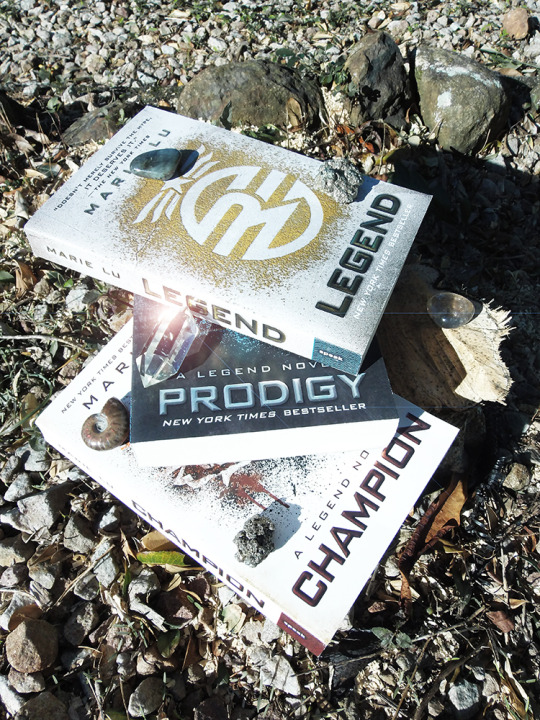
View On WordPress
#Anden#book#book review#Casey Carlisle#castes#Champion#CritiqueCasey#Day#dystopia#Elector#Fiction#June#Kaede#Legend#Marie Lu#Metias#military#murder#Novel#Patriot#Prodigy#Razor#Rebel#rebellion#Republic#revenge#Review#romance#science fiction#Tess
2 notes
·
View notes
Text
If King Charles dies on or before March 25th, 2024, he will technically be the shortest-reigning king in English history.
Anyway, like to charge, reblog to cast.
#king charles#king charles iii#king edward#king edward viii#march 25#the royal leech#royal family#britain#lmao#like to charge#reblog to cast
110K notes
·
View notes
Text

#196#meme#memes#r/196#r196#shitpost#shitposting#reddit refugee#shadow wizard money gang#we love casting spells#wizardposting
103K notes
·
View notes
Text
Expanding a thought from a conversation this morning:
In general, I think "Is X out-of-character?" is not a terribly useful question for a writer. It shuts down possibility, and interesting directions you could take a character.
A better question, I believe, is "What would it take for Character to do X?" What extremity would she find herself in, where X starts to look like a good idea? What loyalties or fears leave him with X as his only option? THAT'S where a potentially interesting story lies.
In practice, I find that you can often justify much more from a character than you initially dreamed you could: some of my best stories come from "What might drive Character to do [thing he would never do]?" As long as you make it clear to the reader what the hell pushed your character to this point, you've got the seed of a compelling story on your hands.
#writing#writing advice#my writing#I think 'ooc' is a bogeyman that casts too big a shadow for fanfic writers#stop thinking 'is this ooc?'#and start thinking 'have I given this character a good enough reason to do the thing?'
49K notes
·
View notes
Text
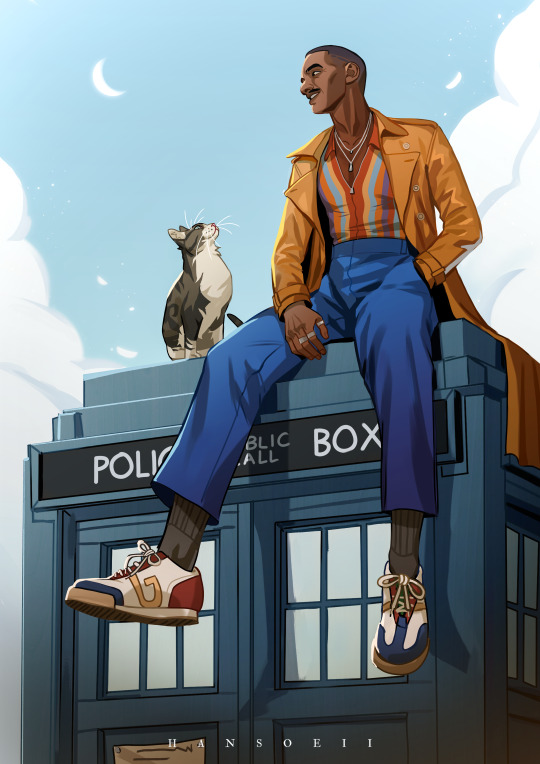
The Doctor!
#casting ncuti gatwa as the doctor gotta be one of the greatest casting decisions ever#can't wait to deeply fall in love with him#also yes I did add my cat to yet another doctor who fanart#minka deserves to be the doctor's companion#I think we can all agree on that#this is a different kind of self insert#doctor who#15th doctor#doctor who fanart#15th doctor fanart#doctor who christmas special#ncuti gatwa#my art
28K notes
·
View notes
Text
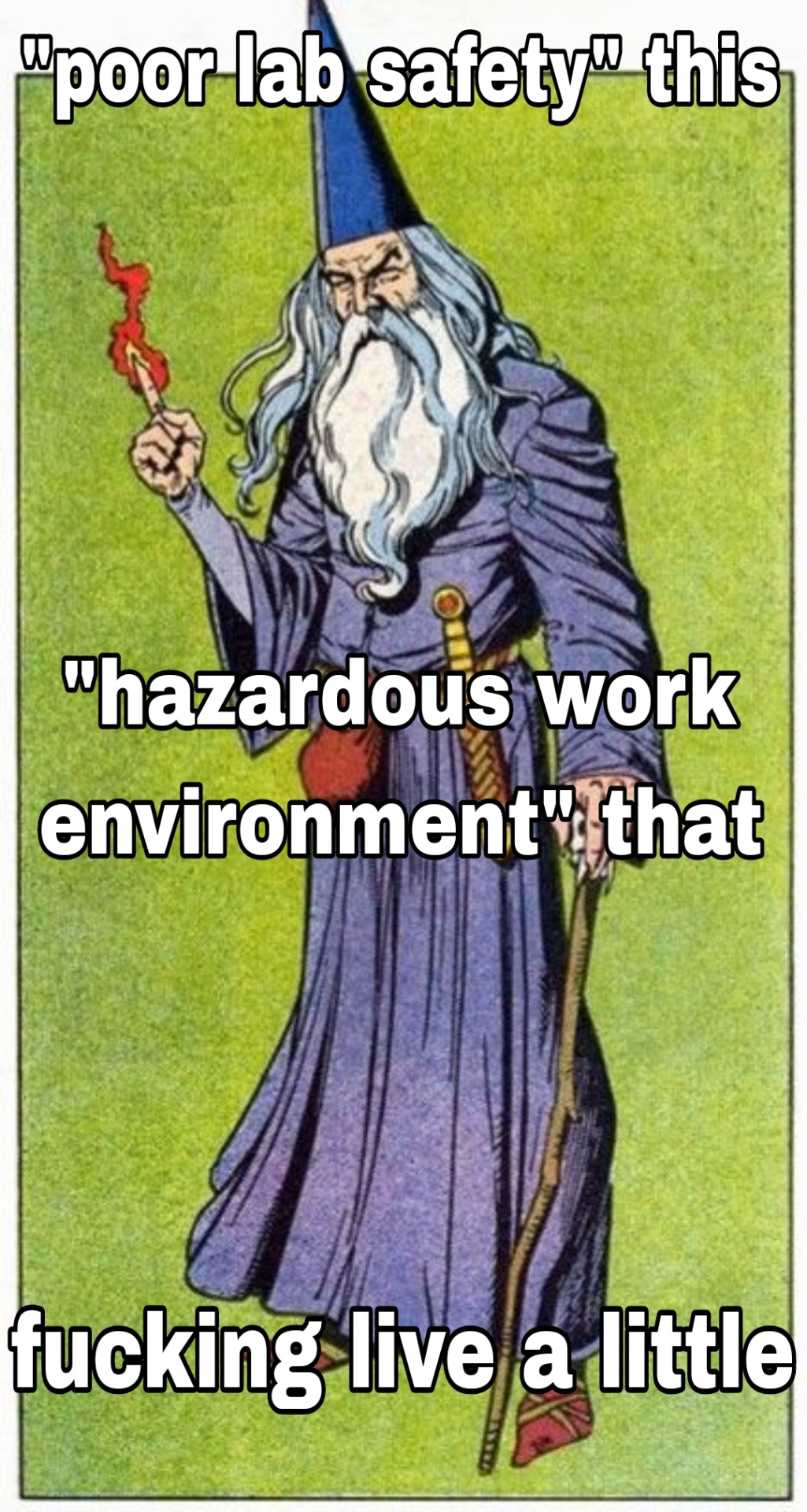
#if i have a specific flask for ONE POTION and the apprentice ignores the system its on them#stop talking down to alchemists like we're dumb#go ahead and wave your sticks at each other while i bottle pure imagination and turn it into a bomb#shadow wizard money gang#wizard posting#wizardcore#pondering orb#potions#shadow wizard grindset#casting spells
49K notes
·
View notes
Text
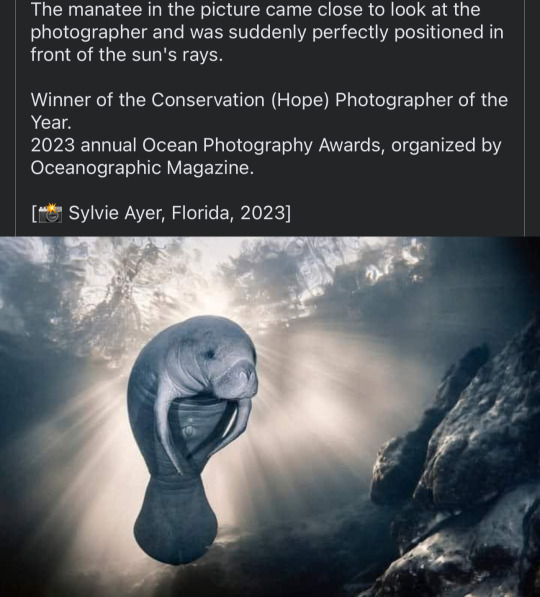
this manatee looks like it’s in a skyrim loading screen
#misc#I encourage anyone dyslexic to try rotating him in your mind. I can’t do that; which is why I’m asking you to.#also: a bunch of tags are surprised this isn’t ‘shopped#it’s the lighting. backlit by the sun (which is diffused through the water) but also forelit artificially#the artificial light - a flash pack or something - casts a hard shadow under the creatures arm#which normally wouldn’t be possible if backlit by the SUN; you’d see a less-hard/more-fragmented shadow above water#as light sources ‘compete’ in a sense - and since there aren’t any light sources which can outshine the literal sun#it looks a bit weird when the darkest shadow is being cast from any other origin point - which is what’s essentially happening here#I don’t know the mechanics of how light travels through water; but I know the effect is substantial even with relatively short distances#also: it’s been balanced and color corrected by the author of the photo - who made deliberate choices to bring out the full potential#so it’s not like it’s a fresh and untouched export#but the kind of ‘tacked on’ appearance of the creature is a result of the lighting conditions within the image
40K notes
·
View notes
Text
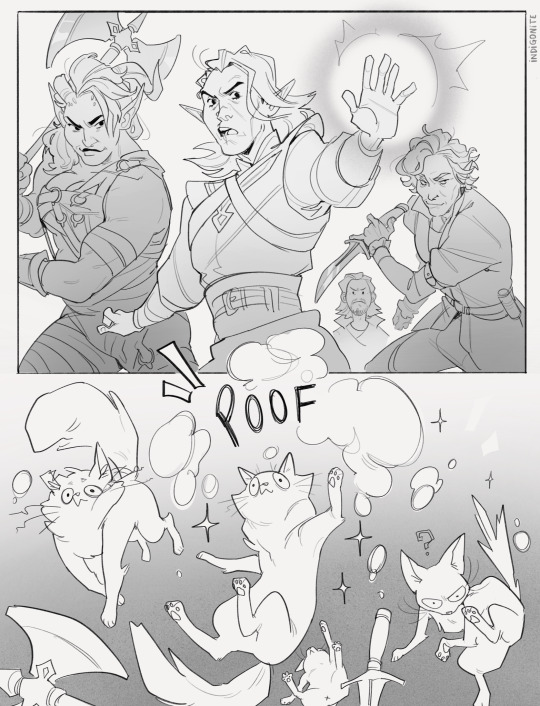
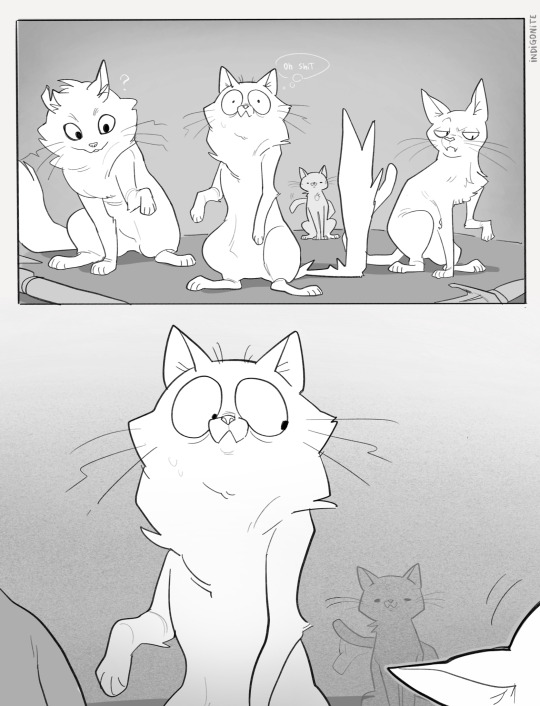

my main criticism for Baldurs Gate 3 is that you can’t keep wreaking havoc if you accidentally polymorph into a cat
#baldurs gate 3#astarion#karlach#gale of waterdeep#i think we can all agree that a cat with a dagger or straight up casting spells would improve the game experience#tav#tavern
35K notes
·
View notes
Text
Jack Black did more of Hit Me Baby One More Time, and I am living for this.
What an ad for Kung Fu Panda 4
18K notes
·
View notes
Photo
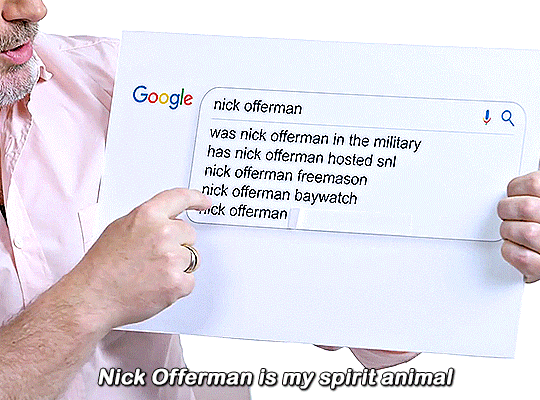
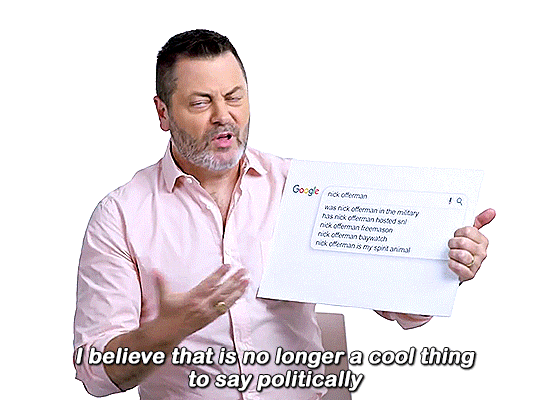

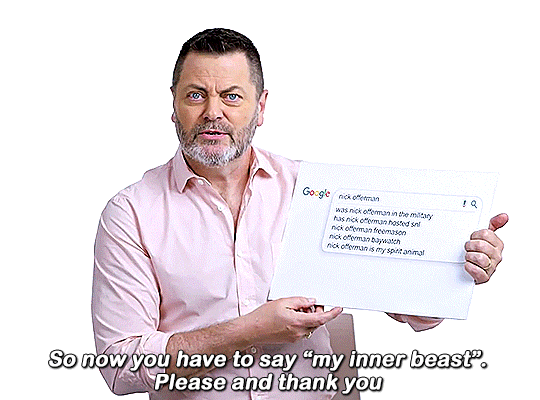


Nick Offerman Answers the Web's Most Searched Questions
–WIRED, 2020
#nick offerman#nickoffermanedit#wired#youtubeedit#mancandykings#menedit#mensource#dilfedit#tlou cast#userives#userlolo#my gifs
135K notes
·
View notes
Text
Live theater in the His Dark Materials universe must be wild. Surely an actor's daemon also has lines to recite, so their daemon's form probably also factors into casting decisions. Maybe some plays have vague character descriptions for daemons, but I bet other plays have really specific or central daemon characters. And sure, big-budget theaters can afford to hire a separate actor with a particular daemon to stand backstage while their daemon plays its part onstage, but community theaters don't have those kinds of resources.
Like if you're casting for Julius Caesar, surely the real historical Caesar had a pretty iconic daemon, right? Are you going to cast an actor with a pigeon daemon as Caesar and just have everyone suspend their disbelief that it's Caesar's lioness, ἁμαρτία?
#his dark materials#for the record I do think daemon-blind casting is the way to go#theater is all about suspending your disbelief after all
24K notes
·
View notes
Text
I'm getting so sick of major female characters in historical media being incredibly feisty, outspoken and public defenders of women's rights with little to no realistic repercussions. Yes it feels like pandering, yes it's unrealistic and takes me out of the story, yes the dialogue almost always rings false - but beyond all that I think it does such a disservice to the women who lived during those periods. I'm not embarrassed of the women in history who didn't use every chance they had to Stick It To The Man. I'm not ashamed of women who were resigned to or enjoyed their lot in life. They weren't letting the side down by not having and representing modern gender ideals. It says a lot about how you view average ordinary women if the idea of one of your main characters behaving like one makes them seem lame and uninteresting to you.
#feminism#media criticism#this doesn't apply to media with large casts of female characters where one or the other is uncommonly outspoken or ahead of her time#and it is dealt with realistically in the setting#im not saying women in the past couldnt be wild and headtsrong and revolutionary#i just think treating it as an essential whenever a female love interest gets added to a historical story about some man is wearing
20K notes
·
View notes
Text
My brother-in-law has a Thing where he gives me increasingly rare copies of The Bee Movie and it’s long since gone from “Goofy running gag” to “I don’t know how much money he’s willing to commit to this bit and it Scares Me.”
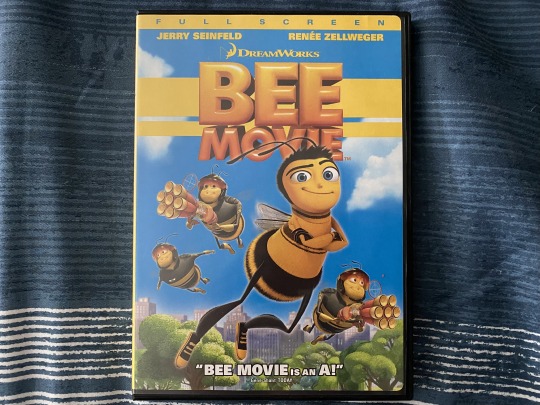
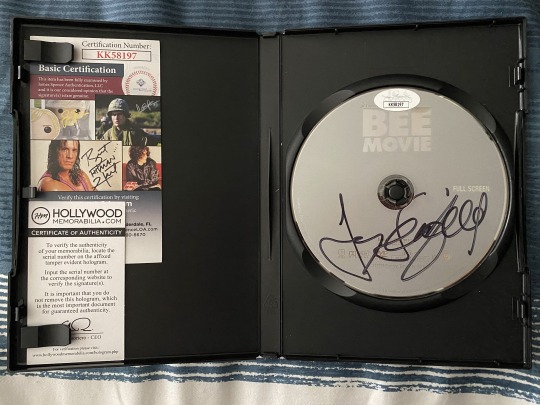
Where the fuck can we go from here
#my life#bee movie#he’s already given me the academy For Your Consideration copy#and copies in greek mandarin and korean#AND copies of the bee movie video game AND pez dispensers AND christmas ornaments#AND bee movie converse sneakers distributed only to members of the cast and crew#at this point i fully expect to find the severed head of jerry seinfeld in a box this christmas#10k#20k
27K notes
·
View notes